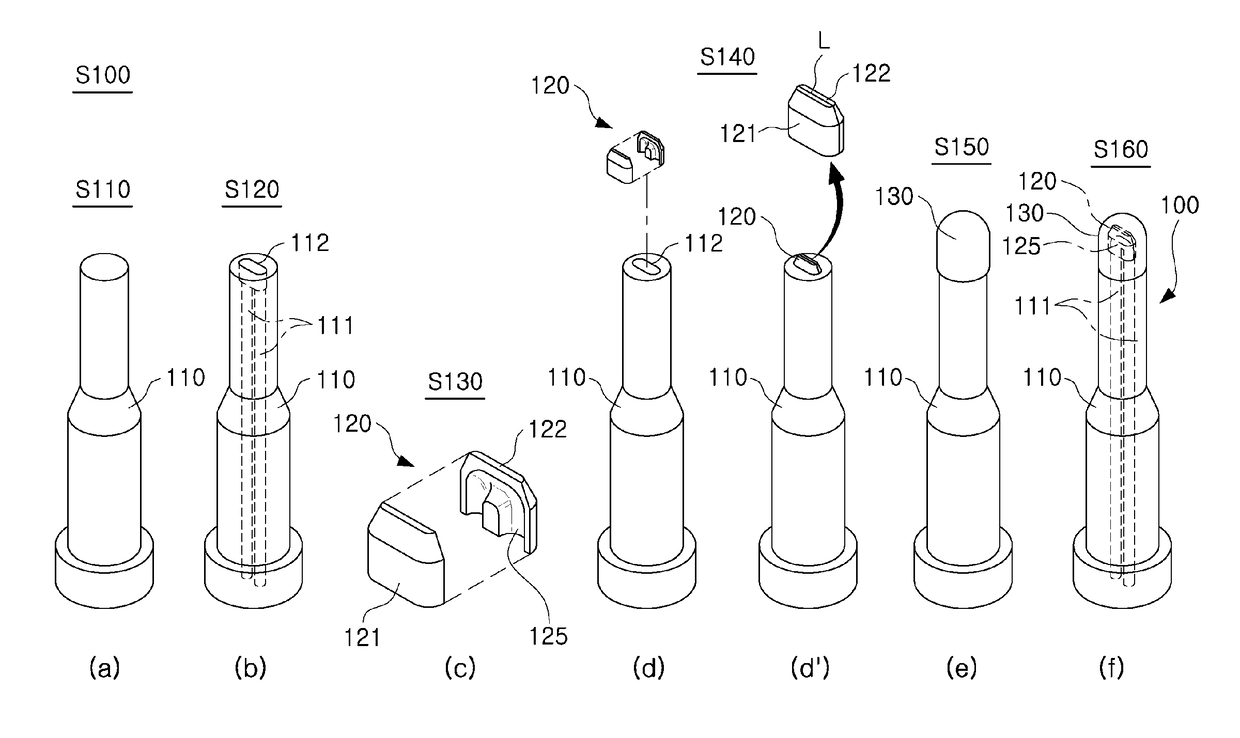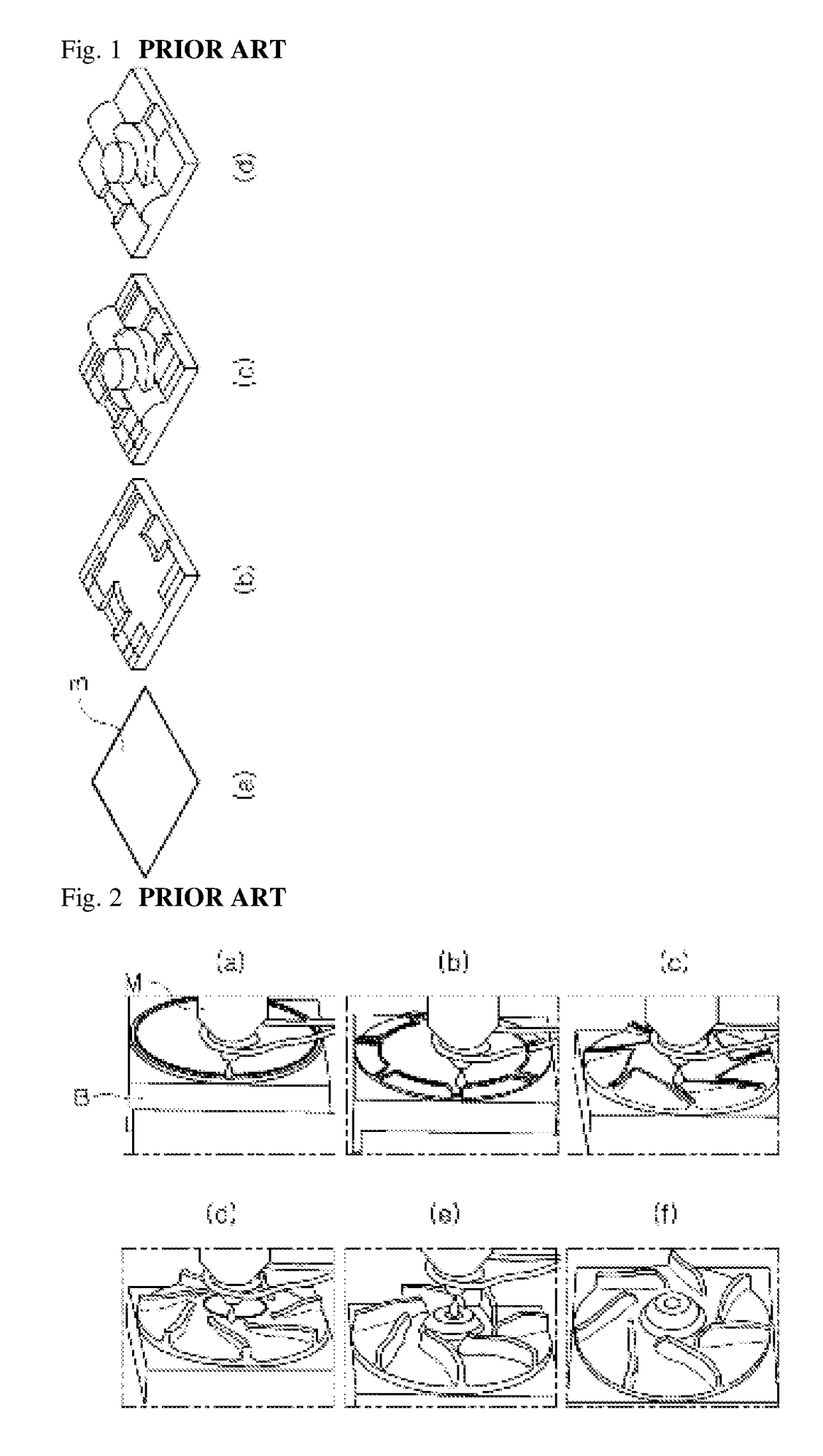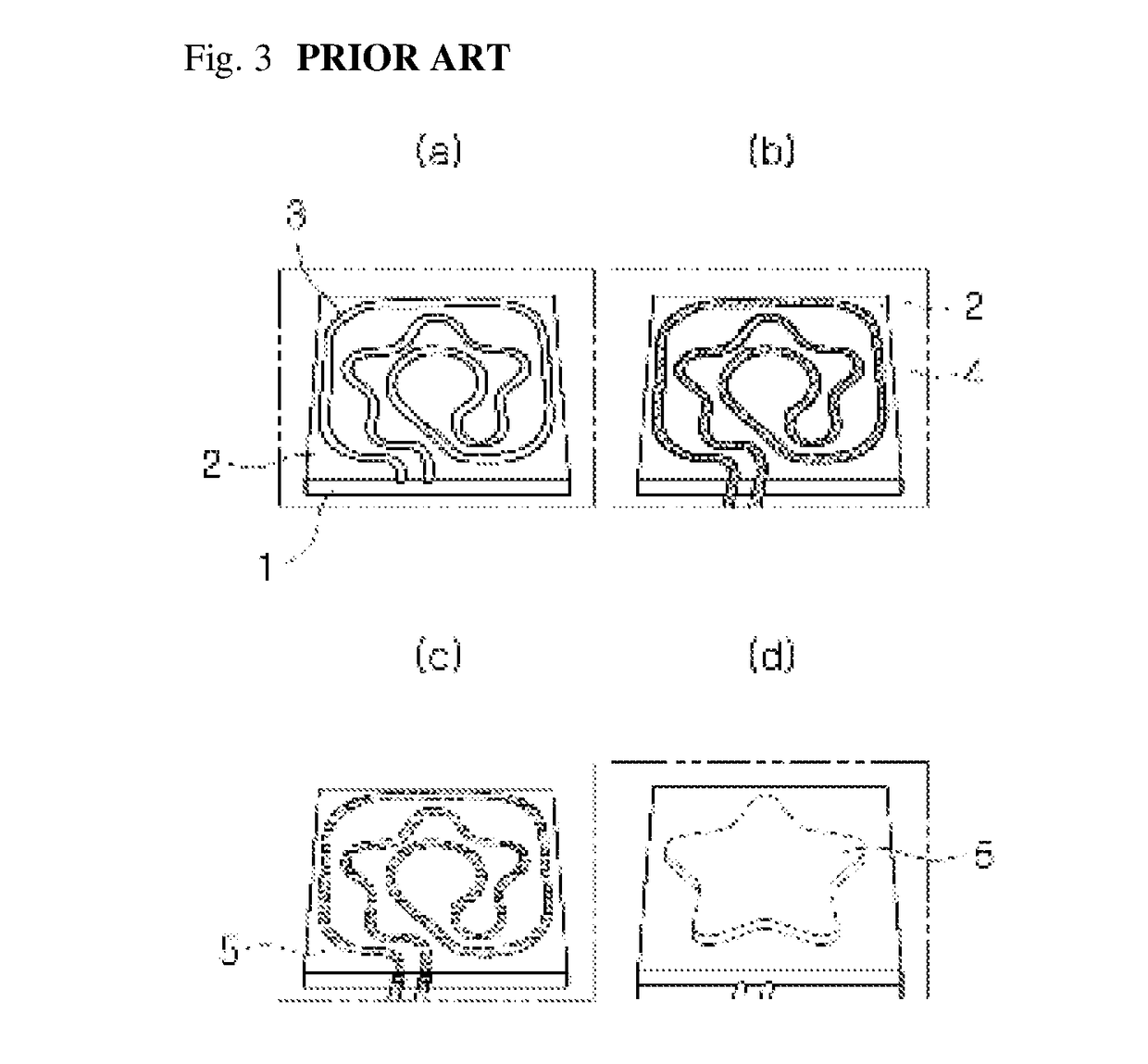Metal product having internal space formed therein and method of manufacturing thereof
a metal product and internal space technology, applied in the direction of manufacturing tools, shaping tools, transportation and packaging, etc., can solve the problems of inability to manufacture molds and metal products with complicated and/or curved cooling channels using conventional metal fabrication methods, and inability to manufacture metal products with complex and/or curved cooling channels, etc., to achieve the improvement of the performance of a finished product, the reduction of time and cost required for manufacturing the metal product (a mold) and the effect of improving the cooling efficiency
- Summary
- Abstract
- Description
- Claims
- Application Information
AI Technical Summary
Benefits of technology
Problems solved by technology
Method used
Image
Examples
Embodiment Construction
[0064]Terms used in the specification are merely used for the explanation of specific embodiments according to the present invention, and are not intended to limit the scope of the present invention. In addition, a singular expression may include a plural expression in the specification.
[0065]Hereinafter, embodiments of the present invention will now be described in detail with reference to the accompanying drawings.
[0066]FIGS. 4A through 4F are schematic perspective views sequentially illustrating a process of manufacturing a metal product according to an embodiment of the present invention. FIGS. 5A and 5B are views illustrating various embodiments of the metal product according to the present invention, each having a front view and a cross-sectional view. FIGS. 6A, 6B, and 6C are respectively, a plan view, a cross-sectional view, and a front view illustrating another embodiment of the metal product according to the present invention. FIGS. 7A and 7B are views illustrating another...
PUM
| Property | Measurement | Unit |
|---|---|---|
| volume | aaaaa | aaaaa |
| surface temperature | aaaaa | aaaaa |
| temperature | aaaaa | aaaaa |
Abstract
Description
Claims
Application Information
 Login to View More
Login to View More - R&D
- Intellectual Property
- Life Sciences
- Materials
- Tech Scout
- Unparalleled Data Quality
- Higher Quality Content
- 60% Fewer Hallucinations
Browse by: Latest US Patents, China's latest patents, Technical Efficacy Thesaurus, Application Domain, Technology Topic, Popular Technical Reports.
© 2025 PatSnap. All rights reserved.Legal|Privacy policy|Modern Slavery Act Transparency Statement|Sitemap|About US| Contact US: help@patsnap.com



